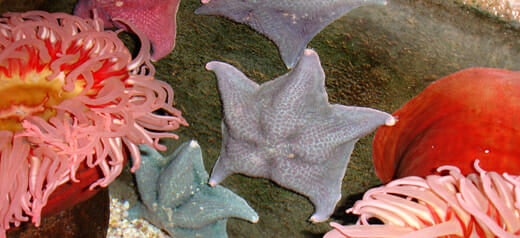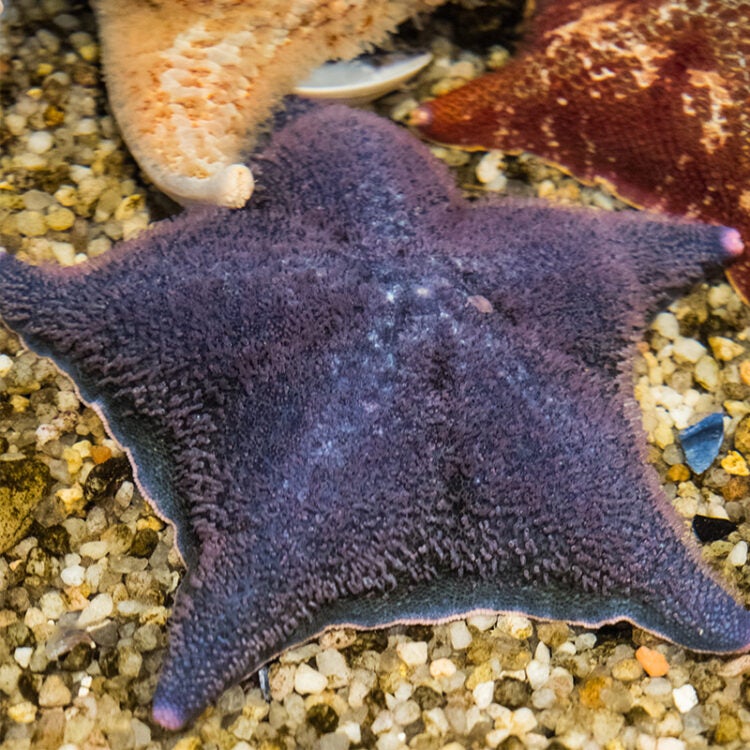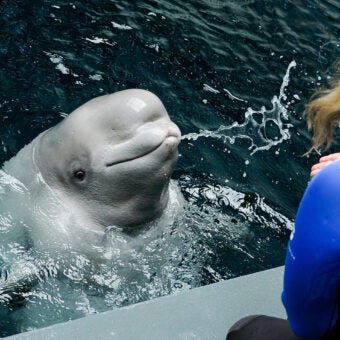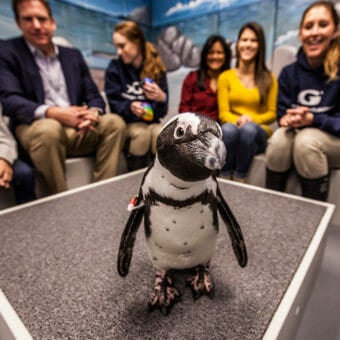-
Size
4-8 inches (10-20 cm) -
Diet
Other sea stars, tunicate worms and algae -
Range
Along the U.S. Pacific coast -
Habitat
Intertidal zones
Physical Characteristics
- Most commonly reddish-orange or mottled white, but can be found in a variety of patterns and colors including brown, green, purple or pink.
- Usually has five, short, triangular arms, but can have from four to nine. The arms appear to have webbing between them and resemble a bat’s wing, hence the species’ common name. It is also called the “webbed star.”
- This sea star typically has a radius of about 4 inches (10 cm) but can reach 6 to 8 inches (15-20 cm).
Diet / Feeding
- Omnivore and a scavenger; its favorite prey includes other sea stars, tunicate worms and algae.
- The mouth of the bat star is located on its underside, and it extends its stomach out of its mouth to digest its food externally.
- A large group of bat stars will sometimes engulf the carcass of a decaying animal and consume it.
Range / Habitat
- Occurs primarily along the U.S. Pacific coast from Alaska to San Diego, with small numbers encountered in Mexico.
- Found among rocks, on sandy bottoms, and among surf grass in low intertidal and subtidal zones to a depth of 957 feet (290 m).
Reproduction & Growth
- The bat star has an unusually long breeding season; both males and females will discharge fertile sperm and eggs all year long, but more abundantly during the late winter and spring.
- A fertilized egg will develop into a motile embryo and then later into a minute larvae. The larva swims by moving its cilia. Eventually, the larva settles and develops into a sea star.
- Since the bat star has a long breeding period, scientists use it for embryological studies because its fertilized eggs are available almost year-round.
- Growth rates and life spans are variable among sea stars. Individuals may live 5 to 35 years depending on the species.
Conservation Status
- “Not Evaluated” on the IUCN Red List.
Additional Information
- Formerly known as Patiria miniata, meaning “vermilion dish.”
- The main predators of the bat star are other sea stars, mollusks, and crustaceans.
- Avoids predators by secreting chemicals used to stimulate violent escape responses in other animals.
- Commensal relationship with a polychaete worm, Ophiodromus pugettensis. The worms live on the surface of the bat star and usually move toward the ambulacral groove. There can be as many as twenty worms on one bat star.
- Like all sea stars, when turned upside down the bat star can right itself by using its tube feet and arms.







